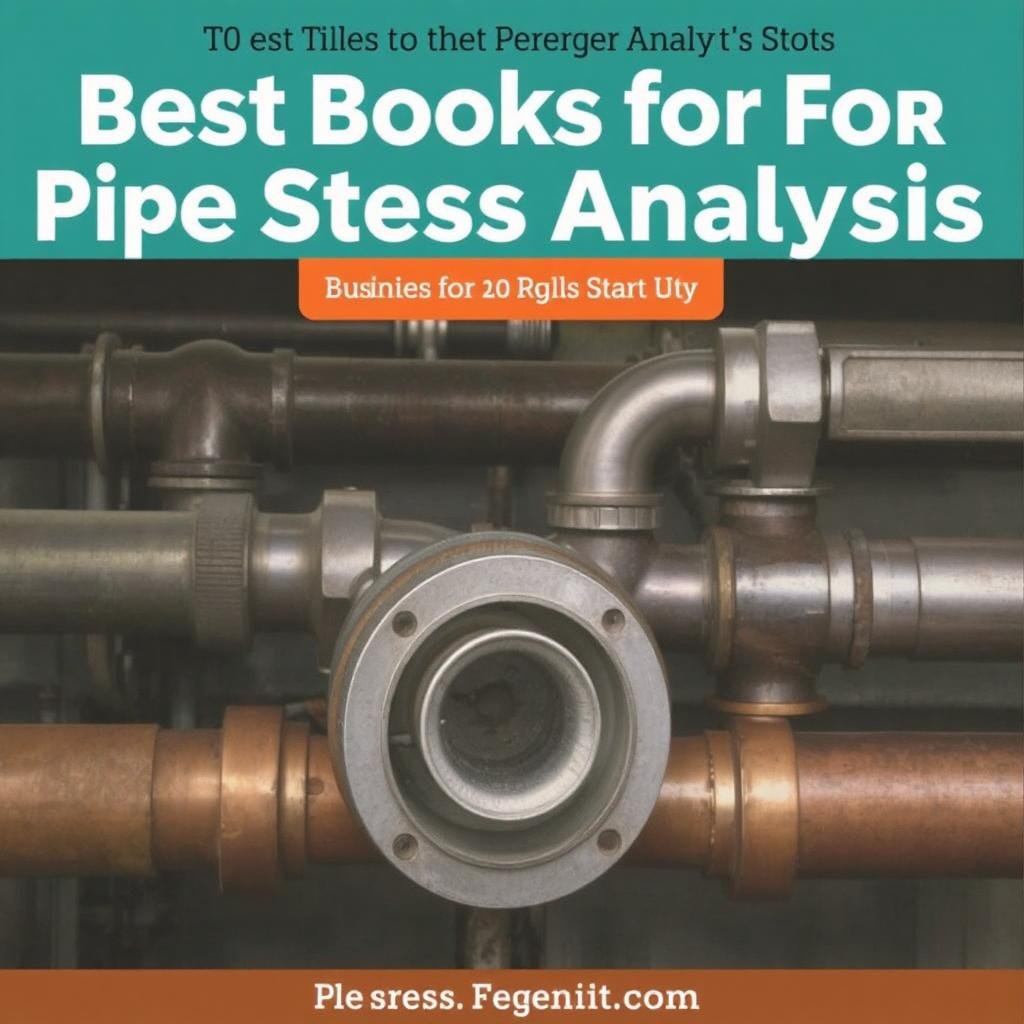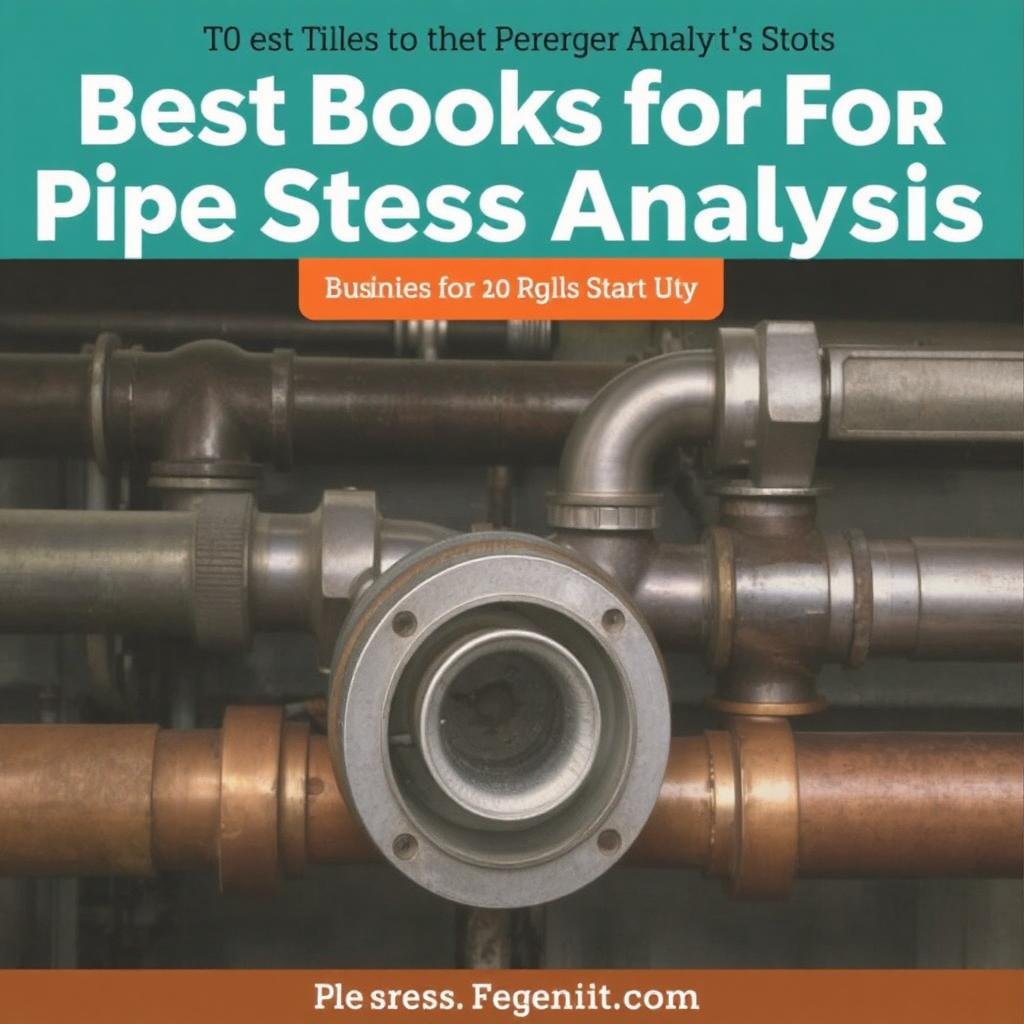
Introduction
Pipe stress analysis is an essential aspect of mechanical and piping engineering, ensuring the safety and reliability of piping systems. Choosing the best resources to learn and understand pipe stress analysis can greatly enhance professional knowledge and practical application. This guide provides an overview of the best books for pipe stress analysis, helping readers find resources that suit their preferences and needs.

What is Pipe Stress Analysis?
Pipe stress analysis involves evaluating the effects of internal and external forces, temperature changes, and environmental conditions on piping systems. The analysis ensures that pipes remain within allowable stress limits, preventing failures such as leaks, ruptures, and structural damage. Common stress types include:
- Thermal Stress: Due to temperature variations.
- Pressure-Induced Stress: Caused by internal and external pressure.
- Dynamic Stress: Resulting from vibrations and seismic events.
Why Choose the Right Book?
Selecting the right book on pipe stress analysis can help in:
- Understanding foundational concepts.
- Mastering analytical and computational methods.
- Applying practical examples to real-world scenarios.
Best Books for Pipe Stress Analysis
Here are some of the most recommended books, categorized for better clarity:
| Title | Author | Key Features | Ideal For |
|---|---|---|---|
| Pipe Stress Engineering | L.C. Peng & T. Becht | Comprehensive coverage of ASME codes, practical examples, and detailed explanations. | Engineers, Practitioners |
| Piping Handbook | Mohinder Nayyar | Includes stress analysis techniques alongside broader piping system design. | Beginners, Engineers |
| Advanced Piping Design | R. Mohan Bhatia | Focuses on practical stress analysis with case studies. | Professionals, Designers |
| Piping and Pipeline Calculations Manual | Philip Ellenberger | Hands-on guide for calculations related to stress, flow, and pressure. | Field Engineers |
| Process Piping: The Complete Guide to ASME B31.3 | Charles Becht IV | Detailed guide on compliance with ASME standards. | Compliance Officers |
Detailed Book Summaries
- Pipe Stress Engineering by L.C. Peng and T. Becht–Buy
- This book provides a deep dive into stress analysis, emphasizing ASME codes and practical applications. Topics include flexibility analysis, dynamic analysis, and fatigue failure.
- Example: A case study on thermal expansion in high-pressure steam pipelines is included to illustrate calculations.
- Piping Handbook by Mohinder Nayyar–Buy
- Covering a wide range of topics, this book includes chapters dedicated to pipe stress analysis. It is particularly useful for beginners seeking to understand piping systems holistically.
- Example: Step-by-step procedures for designing stress-free piping layouts are provided.
- Advanced Piping Design by R. Mohan Bhatia–Buy
- With a focus on modern piping systems, this book includes advanced techniques and real-world examples. It is highly suitable for experienced professionals.
- Example: Analysis of seismic effects on piping systems in industrial plants is discussed.
- Piping and Pipeline Calculations Manual by Philip Ellenberger–Buy
- A practical guide for field engineers, this book covers calculation methods for various piping parameters, including stress. Simplified formulas and diagrams make it user-friendly.
- Example: Quick reference tables for pipe wall thickness and stress allowances are included.
- Process Piping: The Complete Guide to ASME B31.3 by Charles Becht IV–Buy
- This book provides a thorough understanding of the ASME B31.3 code, making it essential for engineers focused on compliance.
- Example: Detailed explanations of allowable stress values for different materials are provided.
Factors to Consider When Choosing Books
- Focus Area
- Determine whether the book focuses on theory, practical applications, or compliance with standards.
- Complexity Level
- Beginners may prefer books with introductory content, while professionals might benefit from advanced resources.
- Learning Style
- Books with examples, illustrations, and step-by-step explanations are more engaging for hands-on learners.

Applications of Pipe Stress Analysis
- Industrial Plants: Ensures the safety of pipelines in chemical, petrochemical, and power plants.
- Oil and Gas: Prevents failures in pipelines carrying hazardous materials.
- Building Services: Manages stress in HVAC and plumbing systems.
Challenges in Pipe Stress Analysis
- Complex Geometries: Analyzing non-linear systems with multiple bends and fittings can be difficult.
- Material Properties: Variability in material behavior under different conditions adds complexity.
- Environmental Factors: Accounting for seismic loads, wind forces, and temperature fluctuations requires advanced techniques.
Advancements in Learning Pipe Stress Analysis
- Simulation Software: Tools like CAESAR II and AutoPIPE complement books by providing hands-on analysis experience.
- Online Courses: Platforms offering video lectures and interactive tutorials enhance learning from books.
- AI-Powered Tools: Artificial intelligence is being used to predict stress patterns and optimize designs.
Conclusion
Finding the best books for pipe stress analysis depends on individual goals and interests. By combining theoretical knowledge from books with practical experience and modern tools, engineers can excel in this field. These resources provide the foundation needed to ensure safety, reliability, and efficiency in piping systems, meeting the demands of various industries.
